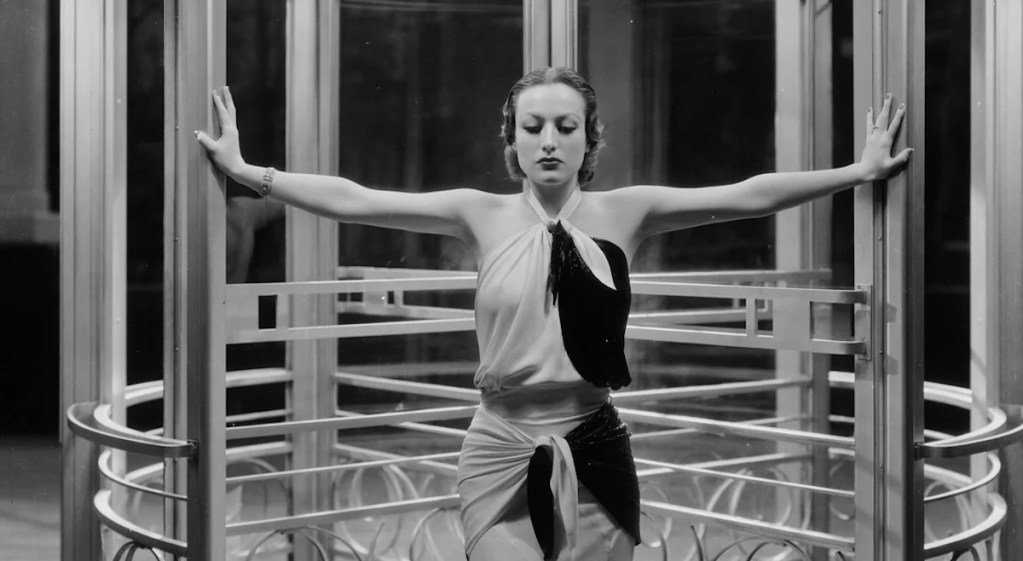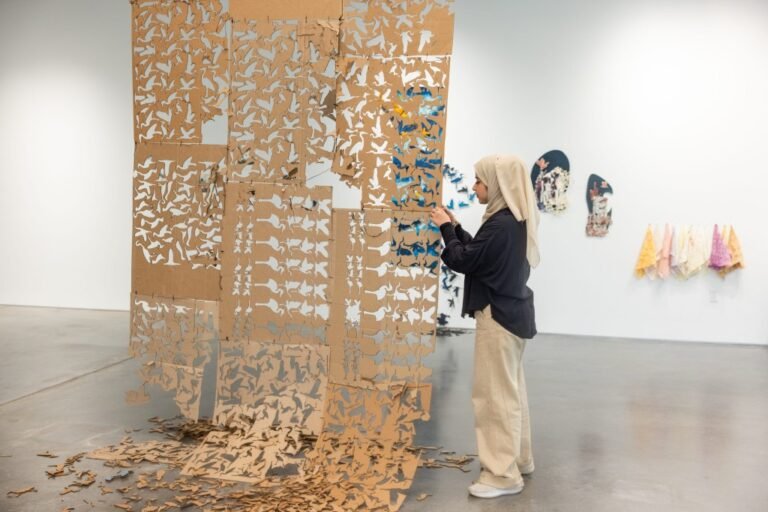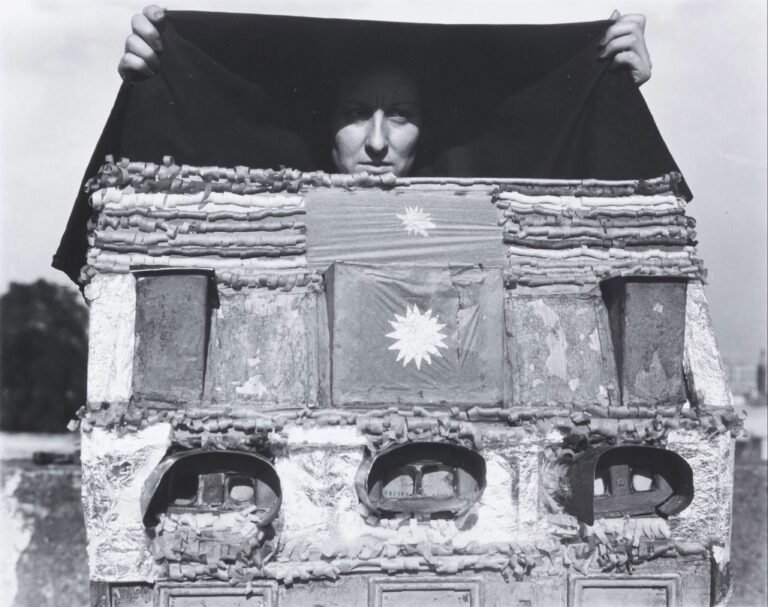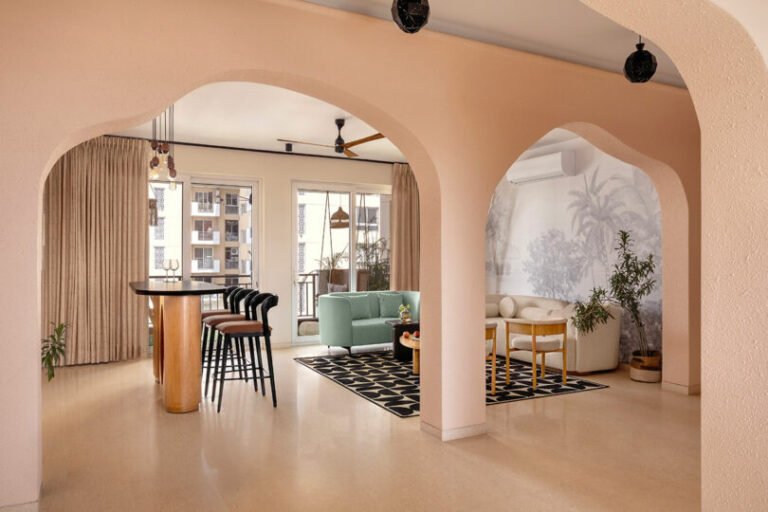

It’s 1925. It’s a new age, all the lines on the economic graphs are going up, and surely no future conflict could ever be as bad as what Europe had just gone through — they didn’t call it “the Great War” for nothing. That spring, the French government inaugurated its Exposition internationale des arts décoratifs et industriels modernes (International Exhibition of Modern Decorative and Industrial Arts) in Paris. The event proved wildly popular; millions flocked to see new styles of architecture, sculpture, fashion, and decoration that consciously eschewed 19th-century influences. Years later, this movement would become globally known as Art Deco (an abridging of arts décoratifs).
One of the many foreign visitors enraptured by the striking line work, stark colors, and complex geometric designs was up-and-coming American film designer Cedric Gibbons. In their 1987 book Screen Deco: A Celebration of Hollywood High Style, authors Howard Mandelbaum and Eric Myers speculate that Gibbons may in fact have been Hollywood’s only envoy to the exhibition. He brought Art Deco to theaters in the United States with his work on 1928’s Our Dancing Daughters, and the look would proliferate through both cinema and society from there. To celebrate the centenary of the Paris exhibition, Film Forum is collaborating with the Art Deco Society of New York to present Screen Deco, a months-long retrospective of notable showcases for Art Deco in cinema. As the title suggests, the series is patterned after Mandelbaum and Myers’s book, and it will include a live presentation from the duo on November 24.

Gibbons is one of the more influential of the lesser-known film artists. He would amass more than 1,500 credits over his nearly four-decade career, a testament to the dizzying pace of industrial film production during Hollywood’s golden age. Even if you aren’t a classic Hollywood aficionado, you know his work — he’s the one who designed the Oscar statuette. Our Dancing Daughters is one of more than 15 films he’s credited on as art director in 1928 alone. Beyond being Art Deco’s US debut, the film was also the breakout role for Joan Crawford, the most notable of the titular dancing daughters. The movie does not feature spoken dialogue but does have a synchronized soundtrack, making it an early novelty of the burgeoning sound era. This aspect is important, since conveying the music directly makes the characters’ partying lifestyle much more vivid and immediate. Indeed, the film was formative in the image of the flapper.
Our Dancing Daughters was a hit, and other studios scrambled to capture the new look of Art Deco. Soon, reality would race to reflect art. In Screen Deco, Myers and Mandelbaum write about how Gibbons’s rich clients would “ask for exact duplications of settings he had created for the screen,” and that he “received requests from newlyweds and engaged couples for blueprints of the dream houses seen at their local Bijou.” (We should bring back calling theaters “Bijous.”) Movie stars would use set designers as interior decorators for their own mansions. Ramon Novarro, Hollywood’s first Latin American heartthrob, had Gibbons furnish his Lloyd Wright-designed house in black fur and silver. Cinema conjured a dream of what modernity could look like, and modernity raced to make that dream real.

The rapid collapse of the prewar social order in the ’20s collided previously segregated groups, and the friction between tradition and the delirious onrush of new technology and social norms is present in many of the movies in the Screen Deco series. Sometimes the juxtaposition is bluntly literal. In The Black Cat (1934), director Edgar G. Ulmer and art director Charles Hall situate a sinister Bauhaus-Expressionistic mansion on a spot formerly occupied by a Hungarian fortress. It’s the stage for a battle of wits between Bela Lugosi as a vengeful psychiatrist and Boris Karloff as his former comrade who sold him out to the Russians during the war. In Grand Hotel (1932), the eponymous Berlin hotel plays host to various romantic and criminal liaisons between its international clientele (including, again, Joan Crawford). The film was shot on an unprecedentedly elaborate set, with an enormous lobby featuring a black-and-white square-patterned floor, as if the characters were chess pieces being maneuvered around a board.
Upperclass-lowerclass relations (emphasized through a recurring motif of characters ascending and descending a dazzling staircase spiraling around a grand chandelier) receive a much more lighthearted touch in Ernst Lubitsch’s Trouble in Paradise (1932), in which romantic and criminal partners become part of a love pentangle with their wealthy industrialist target and her two suitors. And the upper crust receives an expected razzing from the Marx Brothers in Animal Crackers (1930), as Groucho, Chico, and Harpo run wild over high society, a Modernist mansion making for an excellent playground.
Many of the films in Screen Deco are, despite their iconic status, difficult to stream in good condition. With many of these titles playing either on film or in 4K restorations, the program makes for an excellent opportunity to revisit this singular period in cinematic style. Curator Bruce Goldstein has also assembled a murderer’s row of experts for various Q&As and events to help further educate and illuminate this era, from Mandelbaum and Myers to critic Molly Haskell and various archivists and authors. It’s one of the most exciting and cohesive classic film events to arrive in New York this year.

The film series Screen Deco opens at Film Forum (209 West Houston Street, Greenwich Village, Manhattan) on September 8, continuing through January 1, 2026.


